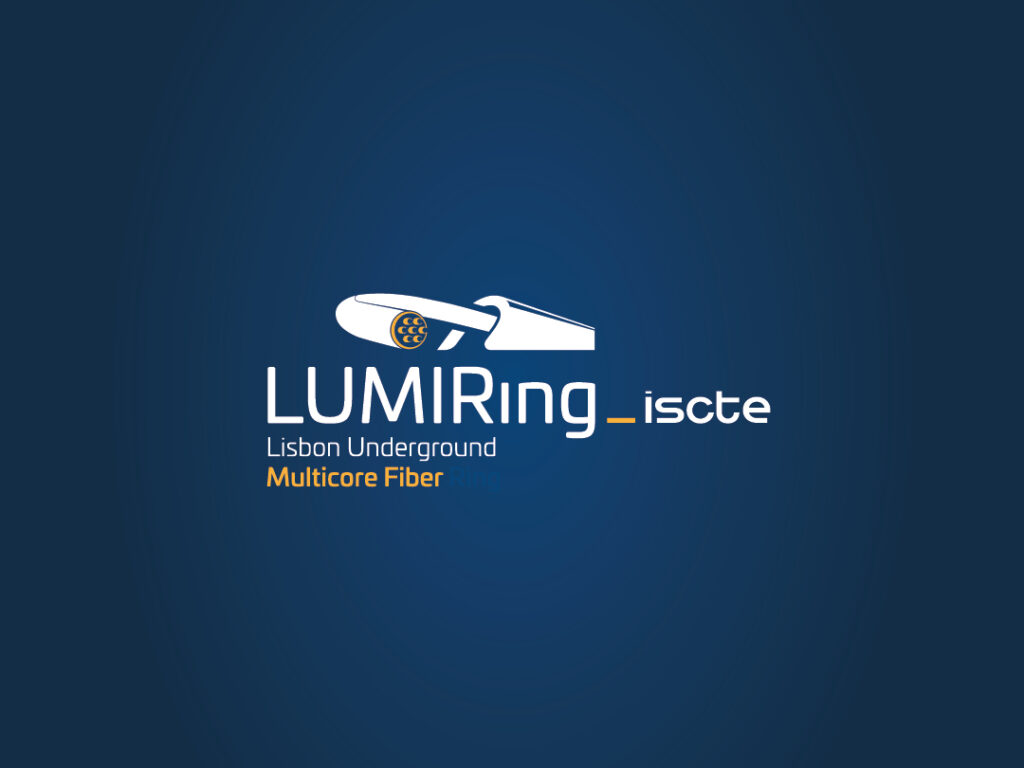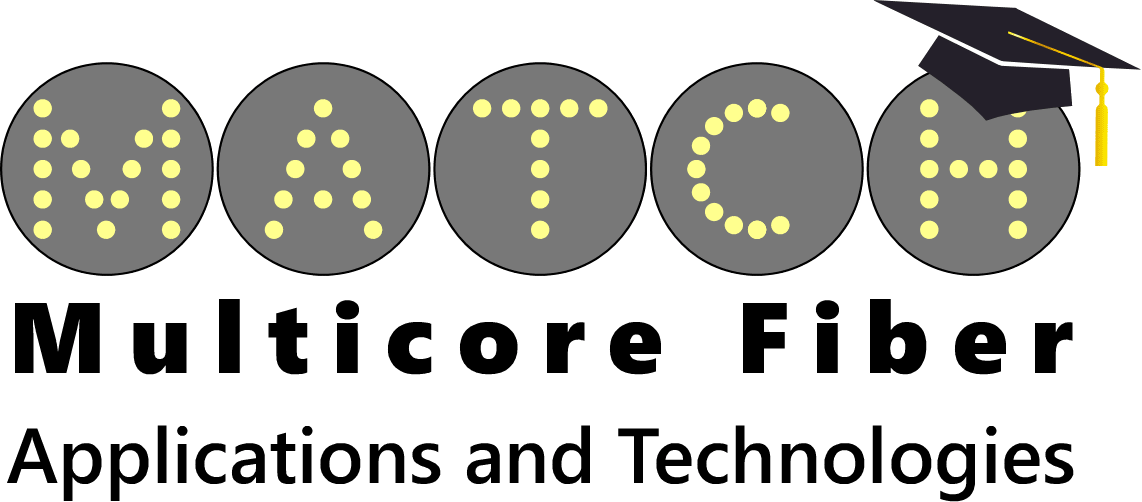MULTI-CORE FIBRE TEST-BED ON THE YELLOW LINE OF THE LISBON UNDERGROUND
Researcher
The LUMIRing project aims to deploy a multi-core fiber (MCF) test bed within Lisbon Metro’s Yellow Line — an ambitious and groundbreaking initiative to explore weakly coupled MCF transmission under real-world conditions. By leveraging the harsh mechanical stresses caused by metro operations in underground tunnels, the project offers a unique opportunity to investigate and address real-life transmission challenges.A core goal is to design, implement, and validate advanced techniques that both mitigate performance degradation and enable the integration of data transmission with sensing, pushing the limits of current MCF capabilities.The test bed’s main infrastructure includes a 12-tube cable, with each tube containing 12 fibers. The cable contains 74 standard cladding diameter WC-MCFs (of 5 different types, with 4 and 7 cores and with step and trench-assisted refractive index profiles) and 70 conventional single-mode single-core fibers (SSMF).
Project Information
2025-04-01
2028-06-30
Project Partners
- IT-Iscte (OCPG) - Leader
- Heraus - (Germany)
- Metro Lisboa - (Portugal)
- Tratos - (Italy)
Multicore Fiber Applications and Technology
Researcher
Multicore fiber Applications and TeCHnologies (MATCH) is a doctoral training network funded by the European Commission, under the MSCA Doctoral Networks 2023 | Marie Skłodowska-Curie Actions, and proposed by a multidisciplinary and intersectoral consortium of international experts.
- MATCH directs PhD research toward multicore fibre (MCF) technology;
- MATCH aims at developing leading solution for scaling future optical fibre communication networks towards emerging information capacities, while offering the potential to lower costs, reduce power consumption and significantly boost network capacity by over tenfold;
- MATCH programme outlines a comprehensive set of research and training objectives tailored to 13 doctoral candidates (DCs);
-The cohort of DCs will be hosted by 14 partners (10 from academia and 4 from the industrial sector);
- The planned training activities of DCs include 32 secondments, 7 mini-symposiums, 3 transferable skills workshops, summer schools, and tutorials, among others.
In MATCH program, DCs will acquire expertise in diverse areas, encompassing:
(i) Design and fabrication of MCFs with transmission capacities surpassing the state-of-the-art;
(ii) Design and implementation of MCF components and subsystems, with a focus on optical amplifiers and switches, multiple frequency comb sources, and parallel-scalable signal processing architectures;
(iii) Development and implementation of machine learning techniques for end-to-end performance optimization of MCF networks;
(iv) Design and evaluation of coexistence of telecom and non-telecom signals in MCF networks.
By engaging the expertise of MATCH academic and industrial partners, DCs will acquire distinct skills and knowledge to transform them to globally-minded scientists and engineers, who will help to shape Europe’s ICT future and societal wellbeing.
For more information see: https://match.iscte-iul.pt/
Project Information
2025-01-01
2028-12-31
Project Partners
- IT-Iscte (OCPG) - Leader
- UNILIM - (France)
- UPVLC - (Spain)
- IT - (Portugal)
- HCV - (Germany)
- INF - (Portugal)
- UST - (Germany)
- CNRS-PhLAM - (France)
- HUJI - (Israel)
- DTU - (Denmark)
- UNIVAQ - Associated Partner (Italy)
- FBGS - Associated Partner (Belgium)
- DRA - Associated Partner (France)
- ULille - Associated Partner (France)
Next generation high-speed optical networks for metro access
Local Coordinator
Connectivity is the major driver in the modern “information society”, where the range of data-driven applications is exploding, and new information-based value chains are rapidly emerging. Optical networks are the backbone of the global communication infrastructure, interconnecting billions of people and a huge number of various autonomous devices, control systems, and machines.
Optical systems’ development incites the skyrocketing growth in the demand for data exchange and harnessing, fuelled by webbased services such as ultra-HD streaming, cloud services, 5G proliferation, fostering the changes in the digital world, and shaping the structure of the modern society. The demand growth is especially pronounced in the access and metro links, where data rates largely exceeding the current <1 Tb/s will be required. Moreover, the COVID-19 – with the huge number of people working from home – has intensified the pressure on the optical networks. Also, features such as the financial cost of the system elements, latency, dynamic reconfigurability, and energy consumption gain progressively more importance for the new generation of access and metro networks.
The Doctorate Network NESTOR will answer the How? When? and Where? coherent optical transceiver will be deployed in metroaggregation optical networks to meet the demand for new cost-efficient solutions. NESTOR will also address the Who? by providing advanced training to 10 Fellows - from a new generation of engineers - with PhD projects significantly expanding the flexibility and capacity of access/metro networks. NESTOR harnesses the complementary expertise of the top academic groups (Aston, PoliTO, UPC, SSSA, and TU/e) and core telecom industry (Infinera, BT, Orange, SM-Optics, VPI and Ericsson). NESTOR will provide Fellows with a uniquely broad education ranging from recent advances in ML&AI to real-world telecom engineering, which will enable them to design and implement high-capacity access and metro networks.
Project Information
2024-01-01
2028-05-01
Project Partners
- IT-Iscte (OCPG)
- ASTON UNIVERSITY - Leader (United Kingdom)
- POLITO - (Italy)
- UPC - (Spain)
- TUE - (Netherlands)
- SSSA - (Italy)
- Orange - (France)
- BT - (United Kingdom)
- SM OPTICS SRL - (Italy)
- VPIPHOTONICS GMBH - (Germany)
- TEI - (Spain)
- CORIANT R&D - (Germany)
- INFINERA PORTUGAL - (Portugal)
Physical Impairment Modelling in Flexible Optical Node Architectures
Global Coordinator
One major goal in this project is to develop an analytical formulation,as well as a stochastic Monte-Carlo (MC) simulator, that allow us to study in a rigorous way the impact of in-band crosstalk, both incoherent and coherent, originated in CDC ROADMs in the performance of flexible grid networks, considering 16-QAM and 64-QAM 400 Gbps signals.On a network-side perspective, the emergence of modulation formats with higher-order constellations and, consequently, with stricter performance margins has increased the importance of physical impairment awareness in the network planning process. Thus, it is essential to incorporate the effects of in-band crosstalk, along with other effects, in an impairment-aware routing and spectrum assignment (RSA) framework. This framework should be able to efficiently provision paths and spectrum for superchannels based on M-QAM carriers in a CDC-ROADM network, while using the physical model as a performance validation tool for candidate optical paths
Analysis and Mitigation of crosstalk Effects in multicore fibre -based Networks
Researcher
This project aims at developing and analysing models for the statistical characterisation of ICXT in MCFs, proposing techniques for mitigating those effects in MCF-based networks, and using those achievements in the development of ICXT-aware algorithms for routing, spectrum and core assignment (RSCA) in MCF-based elastic optical networks (EONs). The project focuses on the theoretical and simulation studies of the statistical characteristics of ICXT in MCF and techniques for mitigating its impact on MCF-based networks. These studies are complemented by the experimental demonstration of the main outcomes of the theoretical and simulation studies. The project takes advantage of the expertise on experimental work and system design on MCF technology of NICT (National Institute of Information and Communications Technology, from Japan) combined with the experience of IT (Optical Communications Group at Lisbon site of Instituto de Telecomunicações) on theoretical modelling and analysis of optical fibre telecommunication systems and networks.
Project Information
2016-04-01
2018-12-31
Project Partners

 Português
Português



